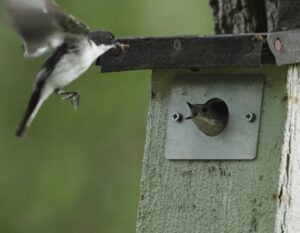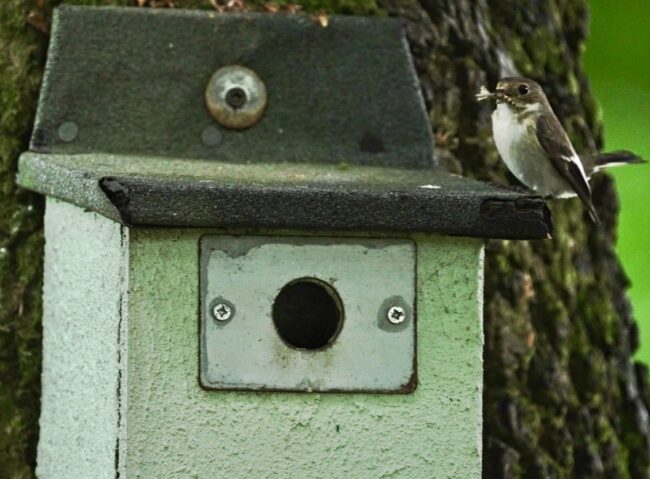Woodland birds, and a woodlands TV film.

Woodlands can provide food for many different species of birds. The food may range from insects hiding in the ‘nooks and crannies’ of bark, to those buried in the leaf litter, or indeed feeding on the leaves, Woodland can also be a rich sources of berries, and material for nest building. The tree canopies offer shelter and protection for nest building, egg laying and the rearing of young.
Examples of birds that may be found in woodlands include the
- Blackcap : Sylvia atricapilla
- Nightingale : Luscinia megarhynchos
- Tawny owl : Strix aluco
- Capercaillie : Tetrao urogallus
- Treecreeper : Certhia familiaris
- Hawfinch : Coccothraustes coccothraustes
- Lesser spotted woodpecker : Dendrocopos minor
- Redstart : Phoenicurus phoenicurus
- Pied flycatcher : Ficedula hypoleuca
Some birds are with us all the year round but others are ‘visitors’ or birds of passage.. They are migratory, taking advantage of seasonal resources, especially food so that they can breed successfully. In the UK, there is a phase of bird migration in the Spring, when visitors like Swifts and Cuckoos arrive. In the Autumn, a different set of birds may arrive such as waders and wildfowl - particularly in coastal regions / wetlands. 
Examples of migratory ‘woodland’ birds include the redstart and the pied flycatcher. Both species make extra-ordinary journeys from central / tropical Africa, crossing deserts, mountains and seas. Migrating birds make use of a range of techniques to navigate their routes. They may use physical landmarks like rivers, coastlines or mountains, or orient using the sun or stars, or even the earth’s magnetic field. Recent research has shown that there is a special protein in the retina of the eye that is sensitive to weak magnetic fields. Sometimes, young birds learn by following their parents.
Migration is not without risk :
- They can get lost - particularly young birds
- They may meet with ‘obstacles’, they may collide with power lines and wind turbines. Skyscrapers with lots of glass in their walls represent a significant problem for many migrating birds. Though it is possible to fit glass units, which contains a patterned, UV reflective coating, visible to birds.
- Extreme weather events, such as sandstorms and wildfires
- Birds may be the target of hunting or trapping during their travels.
- The loss of resting places, for example, UK wetlands are havens for some migrants. If such places are disturbed while birds are roosting / feeding or damaged then birds have no opportunity to rest / refuel.
Woodlands TV has produced a film on how to attract migratory birds to your woodland, it can be viewed below or at this You Tube link : https://youtu.be/v2pklxHbvBM
It focuses in particular on the redstart and the pied flycatcher. Detailed information on the redstart can be found here, and details of the pied flycatcher here.
Comments are closed for this post.

An excellent way to monitor birds with minimal disturbance is with a thermal imaging device. Pixfra is a brand that is popular with the ecology and birding sector. This product line provides a wide field of view for scanning and bird detection.
Ian
4 January, 2025